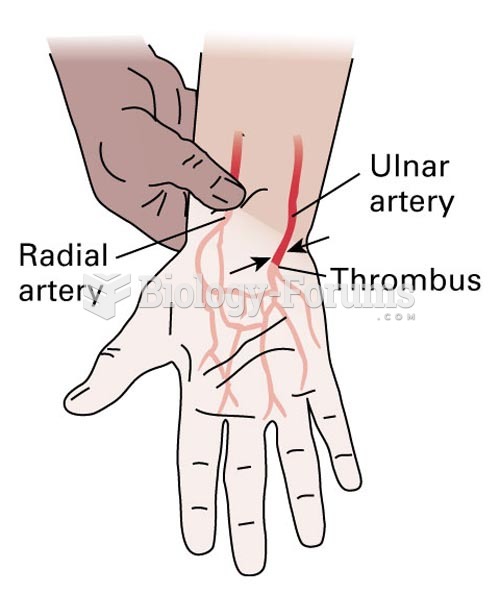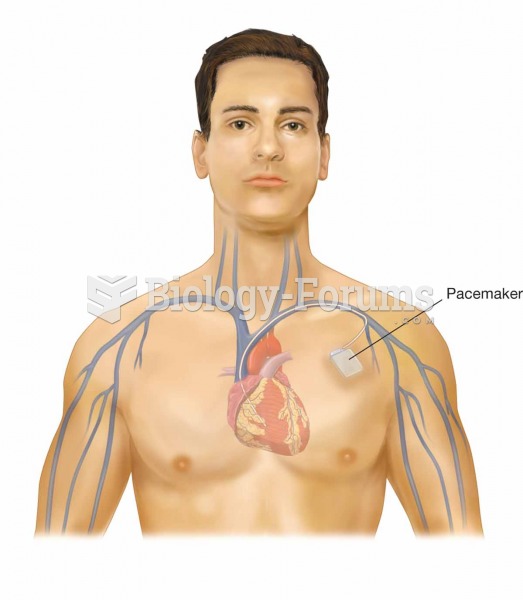|
|
|
The ratio of hydrogen atoms to oxygen in water (H2O) is 2:1.
Russia has the highest death rate from cardiovascular disease followed by the Ukraine, Romania, Hungary, and Poland.
The Centers for Disease Control and Prevention has released reports detailing the deaths of infants (younger than 1 year of age) who died after being given cold and cough medications. This underscores the importance of educating parents that children younger than 2 years of age should never be given over-the-counter cold and cough medications without consulting their physicians.
Every flu season is different, and even healthy people can get extremely sick from the flu, as well as spread it to others. The flu season can begin as early as October and last as late as May. Every person over six months of age should get an annual flu vaccine. The vaccine cannot cause you to get influenza, but in some seasons, may not be completely able to prevent you from acquiring influenza due to changes in causative viruses. The viruses in the flu shot are killed—there is no way they can give you the flu. Minor side effects include soreness, redness, or swelling where the shot was given. It is possible to develop a slight fever, and body aches, but these are simply signs that the body is responding to the vaccine and making itself ready to fight off the influenza virus should you come in contact with it.
 Allen Test: An occluded ulnar artery results in continued pallor of the hand while the radial artery
Allen Test: An occluded ulnar artery results in continued pallor of the hand while the radial artery
 A permanent epicardial pacemaker. The pulse generator can be placed in subcutaneous pockets in the s
A permanent epicardial pacemaker. The pulse generator can be placed in subcutaneous pockets in the s






